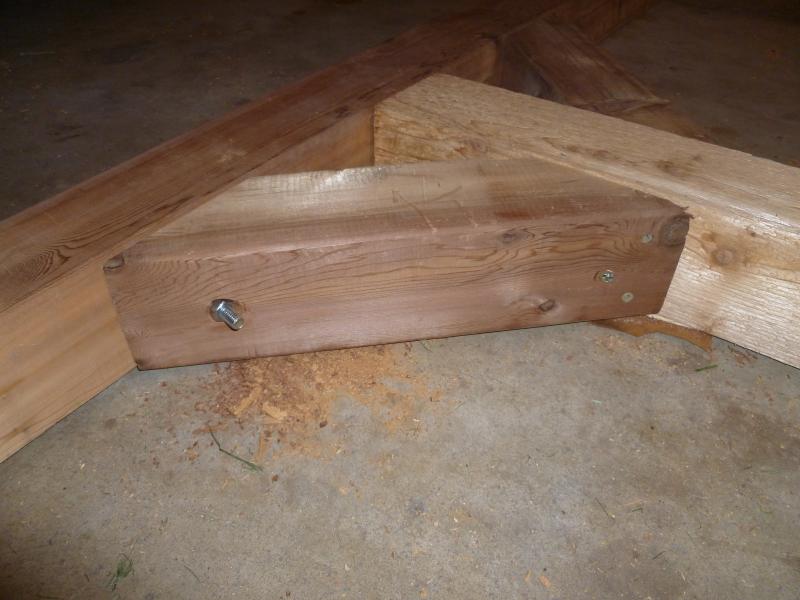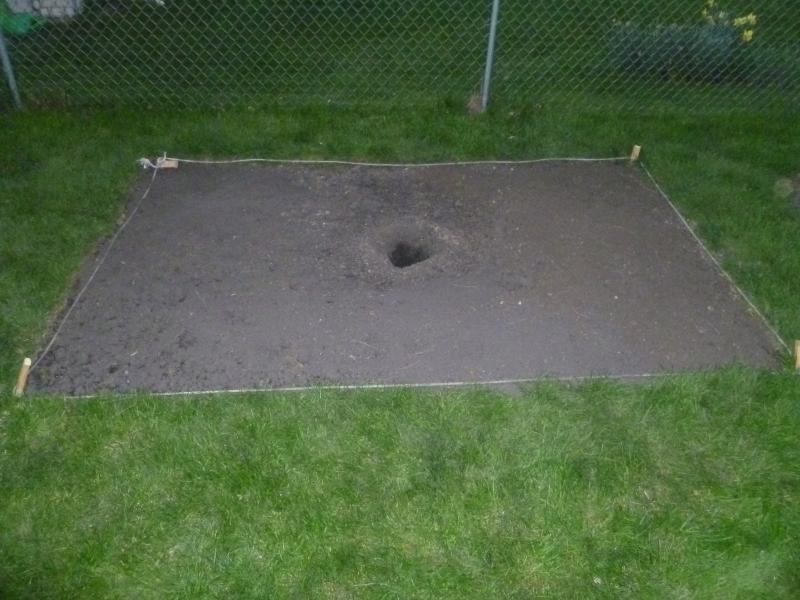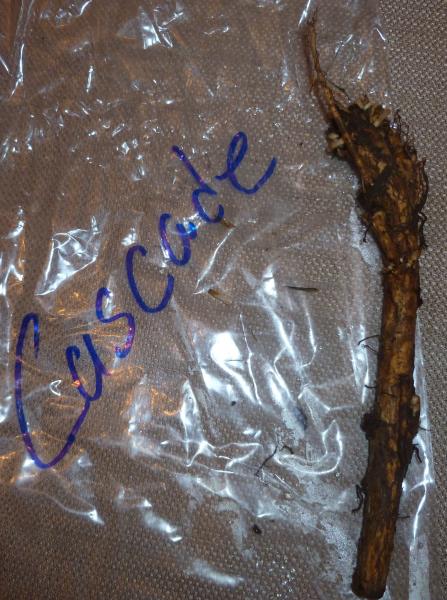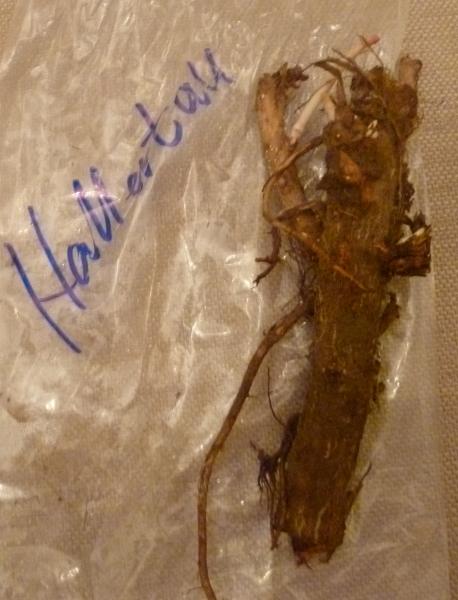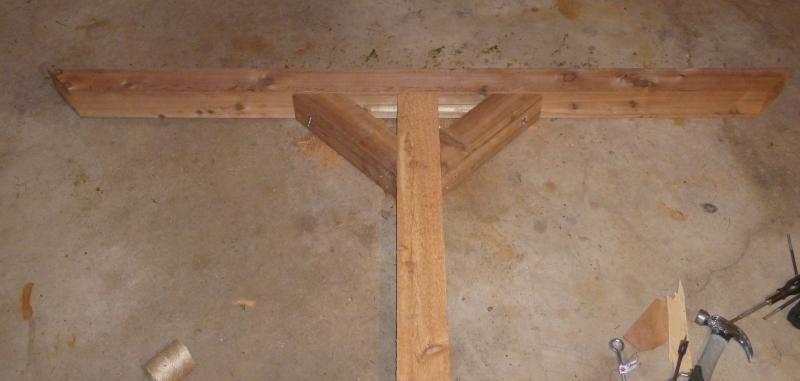brian_n
Well-Known Member
Im planning on putting a hop trellis in my backyard in the Chicago suburbs. I've got 4 rhizomes coming from Farmhouse Brewing Supply: Hallertau, Centennial, Cascade, Willamette. The space is 5 x 7.5 (the staked out area in the picture below), most likely. So far Ive purchased an 8 Red Cedar 4x4 from Menards and I have a 16 Red Cedar 4x4 being delivered to a local lumberyard in the next week or two. The 16 will be my vertical, and the 8 will get cut down to a 6 T and the support braces. My plan is to go 42 inches deep with the vertical, leaving 12.5' above ground. My plan is to use maybe an inch or so of gravel at the very bottom to create a flat surface, then put the trellis in, and fill the gaps with gravel. I know that this won't give as much support as concrete, but it should be better support and better drainage than dirt, right? I'm going to have tie downs in 4 spots, using just some 18 inch wood stakes and some 3/8" sisal rope to both stabilize the pole and give the hops something to grow on. The rope will hook onto some J Hooks, so I can just lift them from the hooks when I harvest.
Below is a picture, plans from Google SketchUp, and some questions. Any advice you guys can provide would be great. Once I get around to building it, probably in 2 weeks, I'll post pictures of the project.
1. Does 42 inches seem deep enough? Too deep?
2. Has anyone else done a trellis of similar size, not used concrete, and been happy with it? I'd prefer to not use it if I don't have to.
3. I've read that 3/8" sisal is good for the hops to climb on, but do most people use something different/stronger as tie downs to support the post?
4. Does the spacing/ placement of the rhizomes look good?





Below is a picture, plans from Google SketchUp, and some questions. Any advice you guys can provide would be great. Once I get around to building it, probably in 2 weeks, I'll post pictures of the project.
1. Does 42 inches seem deep enough? Too deep?
2. Has anyone else done a trellis of similar size, not used concrete, and been happy with it? I'd prefer to not use it if I don't have to.
3. I've read that 3/8" sisal is good for the hops to climb on, but do most people use something different/stronger as tie downs to support the post?
4. Does the spacing/ placement of the rhizomes look good?











